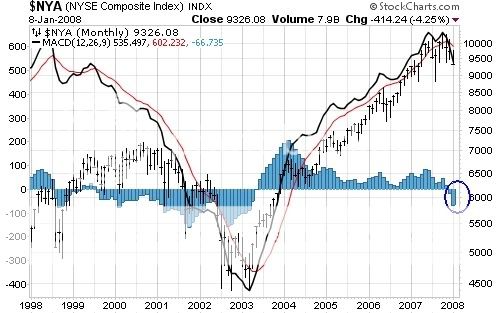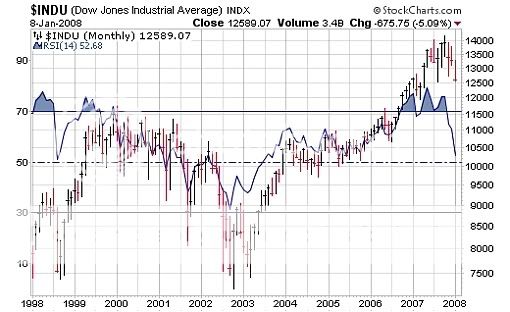See also
http://chenreiki.com/blog/archives/376
http://chenreiki.com/blog/archives/350
http://chenreiki.com/blog/archives/327
Mon, Mar 02, 2009
The Business Times
GIC cuts loss in one fell swop
By Conrad Tan
THE Government of Singapore Investment Corp (GIC) will convert all its preferred shares in Citigroup into common stock to cut its losses. The swop will give it an 11.1 per cent stake in the troubled US bank, which yesterday announced a sweeping plan to boost its common equity base. The conversion will pare GIC’s paper loss on its original US$6.88 billion investment in Citi from 80 per cent or US$5.5 billion to 24 per cent, or US$1.67 billion, based on Thursday’s closing price of US$2.46 for Citi shares.
Separately, Citi said yesterday that it plans to swop up to US$52.5 billion of its preferred stock, including US$25 billion of the US$45 billion held by the US government, for ordinary shares.
Citi also recorded a massive US$10 billion charge for impairment of goodwill and other intangible assets in the fourth quarter, resulting in an additional net loss of US$9 billion for the final three months of last year.
For GIC, the decision to convert its shares appears to have been the lesser of two unpalatable choices. Citi yesterday suspended dividend payments on its preferred shares as well as common stock, which means that GIC would lose the 7 per cent annual dividend that it has been receiving if it chose not to convert its holdings.
The conversion will make GIC the second-biggest shareholder in Citi with a stake of about 11 per cent, compared to about 4 per cent at the time of its original investment. The US government will be Citi’s largest shareholder, owning 36-38 per cent of Citi’s common equity. The final stakes will depend on how many investors in the publicly held tranche of Citi’s preferred stock decide to participate in the share conversion.
One thing is certain: Existing ordinary shareholders will suffer massive dilution of more than 70 per cent. Citi shares plunged 37 per cent to US$1.55 at the start of US trading yesterday after the bank’s announcement. At that price, GIC’s unrealised loss on its Citi investment would be US$3.6 billion. The profitability of US banks ‘is likely to be impaired in the next two years’, said Ng Kok Song, GIC’s group chief investment officer in a statement.
‘GIC’s view is that with this latest move, Citigroup’s capacity to weather the severe economic downturn will be strengthened.’
Before yesterday’s announcement, the market value of the preferred shares held by GIC had already slumped 80 per cent to just US$1.376 billion since its initial investment in Citi, as mounting losses made it less likely that the bank would be able to keep up its dividend payments.
The US government, GIC and other investors that bought Citi preferred stock alongside GIC in January last year will receive common stock at a price of US$3.25 a share. Those investors, including Saudi Arabia’s Prince Al-Waleed bin Talal, have agreed to the exchange, said Citi.
At the conversion price of US$3.25, GIC will get some 2.12 billion common shares in exchange for its US$6.88 billion in preferred stock. Based on Thursday’s closing price of US$2.46 a share, GIC’s stake after conversion is worth US$5.21 billion.
That puts GIC’s unrealised loss on its original US$6.88 billion investment in Citi at US$1.67 billion after the conversion, compared to US$5.5 billion before.
Under the original terms of GIC’s investment in Citi, it would have had to pay a much higher conversion price of US$26.35 for each common share, GIC said. That would have translated into a stake of just 261.1 million shares, worth a mere US$642 million at Thursday’s closing price for Citi shares.
But the conversion also means that GIC will now bear greater risk than before, as an ordinary shareholder. It also gives up for good the 7 per cent annual dividend that it previously earned on its preferred shares.
Citi chief executive Vikram Pandit said that the conversion plan had just ‘one goal’ – to increase the bank’s tangible common equity or TCE. Converting its preferred shares into ordinary equity will boost its TCE ratio – the focus of stress tests by US regulators starting this week as a key measure of the bank’s ability to withstand further losses if the recession is worse than expected.
Ordinary shareholders are the first to suffer any losses, so common equity is seen as the highest quality of capital that a bank holds, and the size of a bank’s common equity base relative to its assets is considered the purest measure of its buffer against losses.
The hope is that by raising its TCE ratio, Citi will be able to weather the worst recession that the US has seen in decades. The plan is expected to increase its TCE as a proportion of its risk-weighted assets from less than 3 per cent now to 7.9 per cent.
Crucially, it does so without the need to inject more money from the public purse. That makes it unnecessary for the US government to seek the approval of lawmakers for more funds amid growing public fury over the use of taxpayers’ money to bail out large banks.
But the US government could still inject more capital into Citi – in the form of mandatory convertible preferred shares – if the stress tests show that the bank’s capital cushion still needs bolstering. That would mean further dilution for ordinary shareholders, including GIC, when the shares are eventually converted to common stock.
‘As a shareholder, GIC supports the initiative by Citigroup and the US government to strengthen the quality of the bank’s capital base in view of the challenging economic environment,’ GIC said in a statement.












